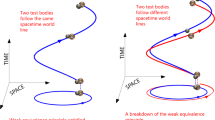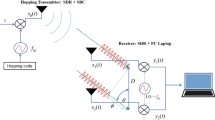Abstract
THE increase of human activity on the lunar surface that can be expected to follow the first manned landings will present a special problem in translunar communications. The lack of an ionosphere about the Moon, the lack of any appreciable atmosphere on the lunar surface, and the nearness of the lunar horizon, require solutions to this problem that may be somewhat different from those most easily available on the Earth's surface. Extended radio coverage about the lithosphere, such as occurs on Earth because of the atmospheric density gradient and temperature inversions, will not be possible because of the vanishingly low density of any gaseous envelope that may exist around the Moon.
This is a preview of subscription content, access via your institution
Access options
Subscribe to this journal
Receive 51 print issues and online access
$199.00 per year
only $3.90 per issue
Buy this article
- Purchase on Springer Link
- Instant access to full article PDF
Prices may be subject to local taxes which are calculated during checkout
Similar content being viewed by others
References
Salisbury, J. W., and Glaser, P. E., (eds.), The Lunar Surface Layer (Academic Press, New York, 1964).
Urey, Harold C., “Age of the Moon, Chemical Composition, Geological Aspects, Stress and Cooling History”, in Conf. Lunar Exploration, Bull. Virginia Polytech. Inst., 56, No. 7 (1963).
Piddington, J. H., and Minnett, H. C., Austral. J. Sci. Res., 2, 63 (1949).
Muhleman, D. O., dissert. Harvard Univ. (1964).
Author information
Authors and Affiliations
Rights and permissions
About this article
Cite this article
SALISBURY, W. A Method for Translunar Radio Communication. Nature 211, 950–951 (1966). https://doi.org/10.1038/211950b0
Issue Date:
DOI: https://doi.org/10.1038/211950b0
This article is cited by
Comments
By submitting a comment you agree to abide by our Terms and Community Guidelines. If you find something abusive or that does not comply with our terms or guidelines please flag it as inappropriate.



